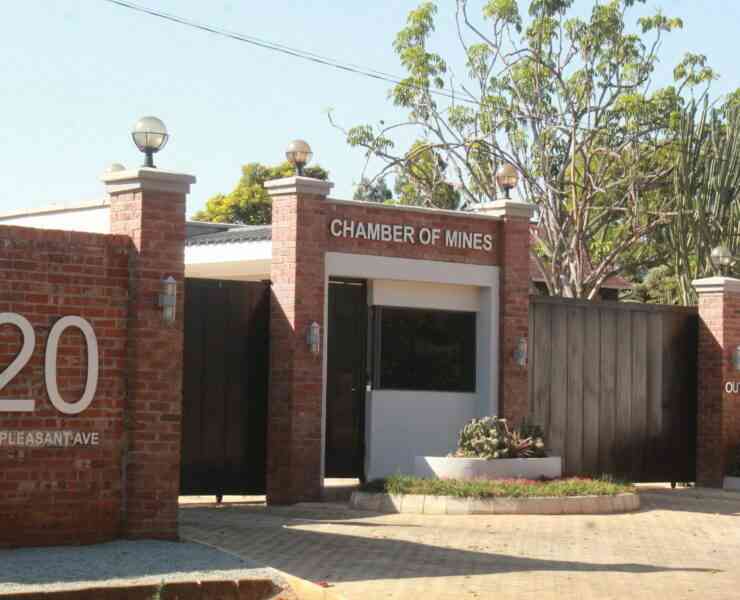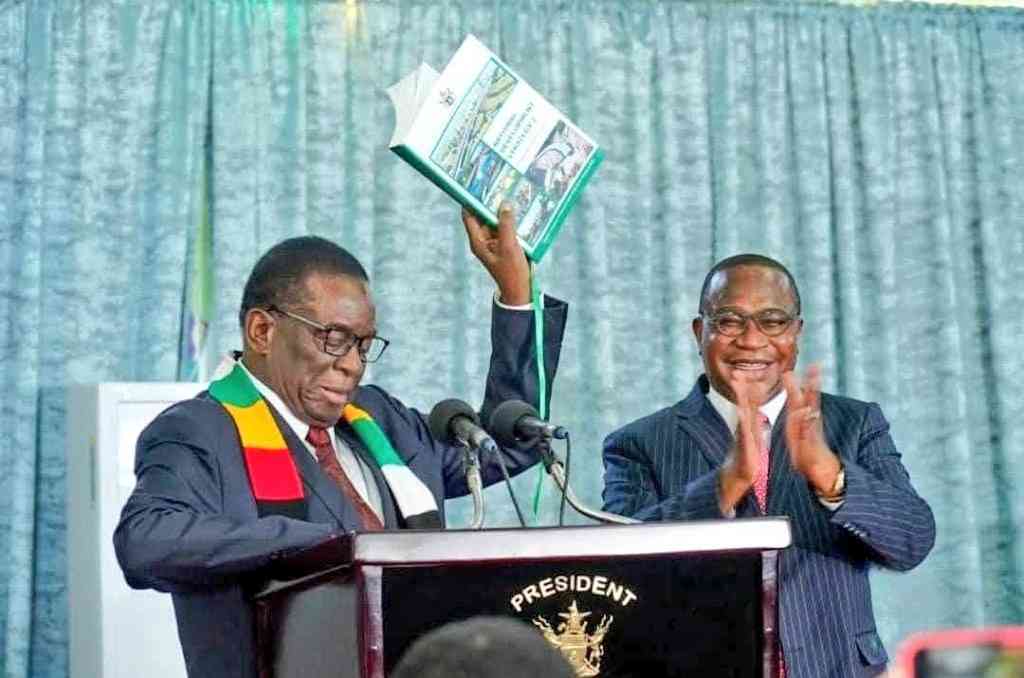
ZIMBABWE’S economic growth is expected to ease to 5% in 2026, down from a projected 6,6% this year, as the country continues implementing its new local currency, Finance, Economic Development and Investment Promotion minister Mthuli Ncube said yesterday.
The outlook, outlined in the US$9,5 billion National Budget Statement, assumes improved agricultural output, firming mineral prices and sustained currency stability, as the country moves towards de-dollarisation.
The government also expects inflation to fall to single digit levels next year.
Ncube said the 2026 fiscal plan serves as an implementation tool for the second National Development Strategy (NDS2), which will guide Zimbabwe’s development agenda from 2026 to 2030.
He said Zimbabwe’s projected growth rates for 2025 and 2026 remain above the expected regional average of 2,9%, which he pointed out reflects the “resilience” of the domestic economy.
“The domestic economy, is therefore, now projected to achieve a growth rate of 6,6% in 2025,” Ncube said.
“This revised projection is primarily on account of strong recoveries in agriculture and other sectors. In 2026, economic growth is projected at 5%.”
Drivers of next year’s growth include anticipated above-normal rainfall, stable international commodity prices, continued currency and price stability, and ongoing reforms aimed at improving the business environment.
- Chamisa under fire over US$120K donation
- Mavhunga puts DeMbare into Chibuku quarterfinals
- Pension funds bet on Cabora Bassa oilfields
- Councils defy govt fire tender directive
Keep Reading
On public finances, Ncube said government expects to collect ZiG288 billion (US$9,4 billion) against planned expenditures of ZiG290 billion (US$9,5 billion), resulting in a marginal budget deficit of US$105,9 million.
“In 2026, government is targeting to collect revenues amounting to ZiG288 billion or 16,9% of GDP (gross domestic product) US$9,4 billion,” he said.
“The revenue envelope, coupled with government’s borrowing capacity, provides for an overall global expenditure of ZiG290 billion (US$9,5 billion) which translates to 17% of GDP.
“The projected revenue collection and expenditure ceiling results in an almost balanced budget, with a small deficit of … US$105,9 million,” Ncube added.
He reported that development assistance between January and September 2025 amounted to US$386,1 million, against a full-year target of US$500 million.
Aid inflows are expected to fall to US$350 million in 2026 due to a decline in global official development assistance.
Ncube also revealed that funding requests from ministries, departments and agencies (MDAs) far exceeded available fiscal space.
“During the budget consultative stage, MDAs submitted bids over ZiG828,5 billion, way above the available capacity of ZiG253 billion, which is being distributed among MDAs,” he said.
Among major allocations, the ministry of Finance will receive ZiG28,17 billion, Industry and Commerce ZiG459,8 million, Lands, Agriculture, Fisheries, Water and Rural Development ZiG26,8 billion, Mines and Mining Development ZiG789 million and Transport and Infrastructure Development ZiG4,6 billion.
The ministry of Defence was allocated ZiG19,7 billion, the Office of the President and Cabinet ZiG11 billion, Public Service, Labour and Social Welfare ZiG12 billion, Health and Child Care ZiG28 billion, Energy and Power ZiG 330,3 million, Local Government, Public Works and National Housing ZiG4,5 billion and Tourism ZiG339,4 million.
Acknowledging the manufacturing sector’s importance in driving economic transformation, Ncube said industries will receive ZiG459,9 million for retooling and working capital support.
“In view of the manufacturing sector’s strategic role in driving structural transformation, government has set aside ZiG459,9 million to support tooling and working capital requirements of the industry, as well as for the improvement of the policy environment,” he said.
The budget also shows that foreign currency inflows reached US$12 billion in the first nine months of 2025, while diaspora remittances are expected to exceed US$2,8 billion for the full year.
Renowned economist Professor Gift Mugano said the 2026 budget exposes intensifying fiscal pressures and a deepening public debt challenge.
He said Ncube admitted the Treasury had accumulated outstanding payments of US$1,7 billion to service providers by the end of 2024.
Outstanding payments for the 2025 fiscal year already stand at US$1,28 billion, pointing to worsening arrears.
Mugano also raised concern over the rapid surge in domestic debt.
Ncube’s July mid-term review placed domestic debt at US$8,9 billion, but the figure has since risen to US$9,8 billion in the latest budget presentation.
Mugano warned that the 2026 budget lays bare the severe pressure posed by mounting public debt, arrears and unfunded obligations.
“The 2026 budget exposes public debt and outstanding payments as a major threat to economic stability,” he said.
On new tax measures, Mugano said they will propel US dollar inflation at a time policymakers are focusing heavily on the behaviour of the local currency.
“From January to date, annual US dollar inflation has largely hovered around 14% and slowed only slightly to 13,1% recently. This is massive and has acted as a silent killer, as economic actors spend their energies analysing ZiG inflation,” he said.
“New tax measures such as the increase in VAT (from 15% to 15,5%, the cash withdrawal levy and the IMTT (Intermediated Money Transfer Tax) will continue to pile more pressure on US dollar inflation.”
He said US dollar inflation is likely to become a major headache in 2026 even as ZiG inflation subsides, describing the situation as “a paradox”.
Mugano questioned whether businesses are adequately factoring US dollar inflation into their 2026 strategies and budgets, given its increasingly significant impact on pricing, cost structures and financial planning.
- The foreign currency exchange rate as of November 27: US$1:ZiG26,18









